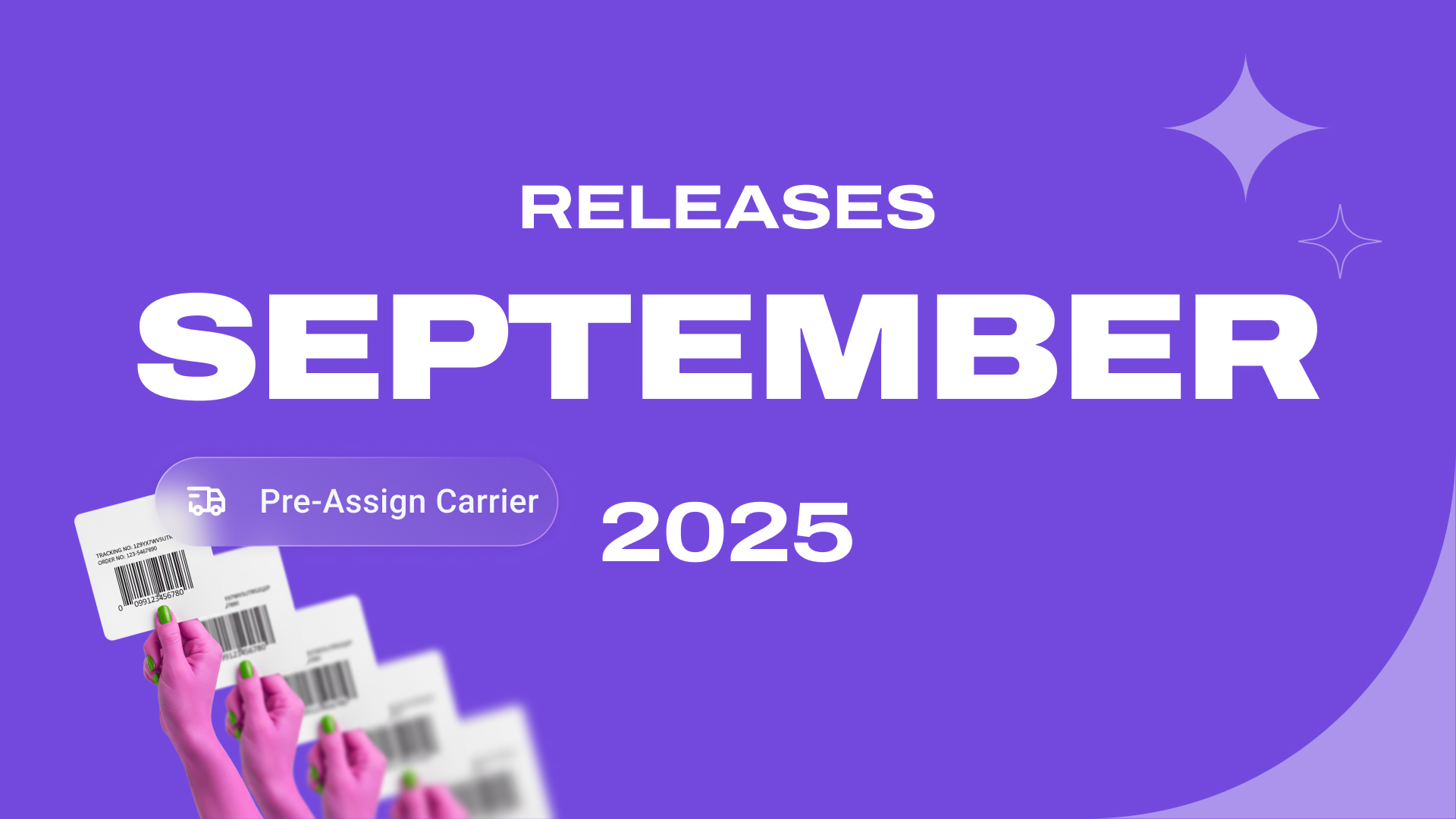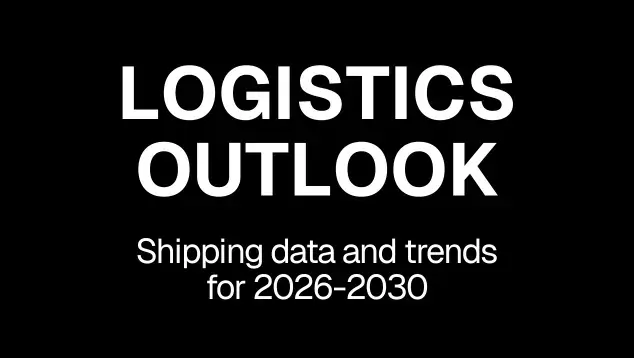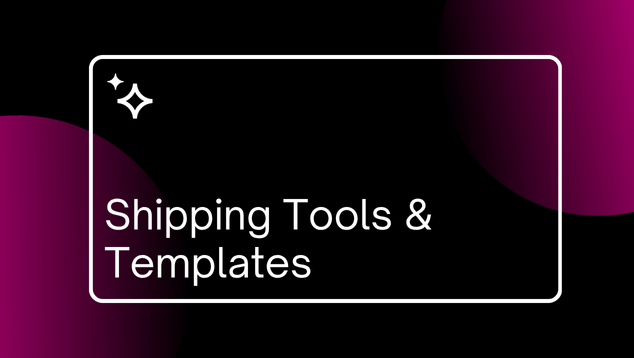What is Shipping Analytics? Tools & KPIs for 2026
 By
Giulia Castagna
·
6 minute read
By
Giulia Castagna
·
6 minute read
In complex, multicourier logistics environments, the ability to extract, segment, and interpret shipping data is a critical differentiator. Shipping analytics enables logistics managers to centralise performance metrics, monitor SLA compliance in real time, and simulate cost-saving scenarios using predictive models. This article outlines the strategic frameworks, tools, and KPIs that define effective shipping analytics in 2026.
TL;DR:
- Shipping analytics provides real-time insights to optimise courier performance and reduce costs.
- For logistics directors, it's a strategic tool to manage complexity and meet SLAs.
- Tracking the right KPIs can improve delivery reliability and enhance customer satisfaction.
- AI-powered solutions help forecast demand and automate cost-saving decisions.
- Choosing the right analytics platform requires attention to scalability, integrations, and actionable insights.
Table of contents
- What is Shipping Analytics?
- Core metrics to monitor shipping analytics
- Common shipping challenges — and how shipping analytics solves them
- Top Shipping Analytics software solutions in 2026
- How to choose the right Shipping Analytics tool?
- Shipping Analytics FAQs
What is Shipping Analytics?
Shipping analytics refers to the systematic collection, interpretation, and use of logistics data to optimise delivery operations. Unlike generic shipping software, which focuses solely on label generation or courier integrations, analytics platforms offer deep visibility into operational performance and cost structures.
This includes everything from tracking delivery delays to identifying high-performing couriers and analysing shipping costs across regions.
Shipping analytics empowers logistics directors to take control of their data, identify inefficiencies, and make decisions based on performance trends rather than gut instinct.
Learn more about how AI enhances supply chain visibility.
Core metrics to monitor shipping analytics
Monitoring the right KPIs helps logistics leaders take meaningful action. Here are the most impactful metrics:
- On-time delivery rate: percentage of shipments arriving on schedule.
- Order cycle time: time from order placement to final delivery.
- First-attempt delivery rate: successful deliveries on the first try.
- Shipping cost per parcel: average spend per shipment.
- courier performance index: reliability and speed per courier.
- Carbon emissions per shipment: essential for sustainability goals.
For more detailed KPI guidance, visit our logistics KPI guide.
Common shipping challenges — and how shipping analytics solves them
Lack of visibility into courier SLAs
Many logistics directors struggle with limited oversight into whether their couriers are truly meeting agreed-upon SLAs. Delivery delays, misrouted parcels, or failed first-attempt deliveries often go unnoticed until they become customer service issues. Without a clear performance audit, holding couriers accountable or renegotiating contracts becomes guesswork.
Shipping analytics tools provide real-time dashboards that monitor SLA compliance across all couriers and services. By consolidating this data in a central platform, logistics teams gain instant visibility into performance deviations—allowing for timely escalation, vendor comparisons, and data-backed renegotiations.
Escalating shipping costs and lack of cost control
Shipping expenses are among the most volatile line items in a logistics budget—especially when working with multiple couriers, service levels, and regional surcharges. Without analytics, cost overruns are hard to detect and even harder to attribute to specific causes, such as inefficient routing or underperforming services.
Shipping analytics addresses this by breaking down cost per shipment, per courier, and even per destination. Advanced platforms can detect hidden fees and identify cost-saving opportunities across the delivery network. This empowers logistics leaders to take corrective action, simulate courier mix adjustments, and optimise total spend.
Inaccurate demand forecasting and poor capacity planning
Fluctuating order volumes, seasonality, and unpredictable external disruptions—such as strikes or adverse weather—make it difficult to plan shipping capacity efficiently. Overestimating leads to underutilisation and wasted spend, while underestimating causes backlogs and SLA breaches.
Modern analytics platforms use historical trends and AI-based models to improve forecasting accuracy. By identifying demand patterns and anomalies early, logistics directors can align courier allocation, staff planning, and warehouse throughput accordingly. This not only reduces bottlenecks but also protects delivery reliability and cost-efficiency during peak periods.
Discover how AI is reshaping logistics strategy in our article on AI and logistics innovation.
Top Shipping Analytics software solutions in 2026
Shipping analytics platforms have evolved far beyond simple reporting tools. They now offer predictive insights, cost simulations, and automated recommendations powered by AI. Below is a curated overview of the most relevant platforms in 2026, tailored for logistics leaders managing large shipping volumes across multiple couriers.
- ShippyPro Optimizer
- Senvo
- Sendcloud Shipping Intelligence
- Reveel
- Parcel Perform
- ShipSigma
- Lojistic
- Aftership
- Optimind
ShippyPro Optimizer

Best for: End-to-end analytics with strong EU courier coverage
ShippyPro Optimizer is designed for logistics directors who need full visibility across multi-courier shipping networks.
ShippyPro Optimizer for shipping analytics offers:
- Real-time performance tracking for all integrated couriers, regions, and shipping methods
- AI-powered courier invoice auditing that flags hidden fees and discrepancies
- Weekly performance insights powered by AI
- Number of exceptions divided by type
- Exportable XLS reports.
With strong integrations and coverage across UK, EU, and international couriers, ShippyPro Optimizer is a solid choice for businesses looking to scale intelligently and can also be interated via API.
Senvo

Best for: Data visibility and courier cost control for retail supply chains
Senvo is a logistics data intelligence platform designed to provide centralised visibility across transportation, delivery performance, and parcel costs. Built for retail and DTC brands, it enables logistics leaders to unify and act on disparate courier data for better decision-making and strategic cost reductions.
Key Features:
- End-to-end parcel visibility across multi-courier networks
- Shipment-level margin tracking and performance attribution
- Detailed cost breakdowns by courier, region, and product type
- API-based integration with existing fulfilment tech stack
Sendcloud Shipping Intelligence

Best for: SMEs and retailers focused on European last-mile optimisation
Sendcloud's analytics suite focuses on delivery performance across Europe, offering real-time tracking dashboards and delivery success insights. Its strength lies in post-purchase analytics and returns efficiency, making it ideal for growing e-commerce brands.
Main analytics features:
- Real-time tracking for all integrated couriers
- Courier recommendations powered by AI
- Communications on delivery issues in real time.
Reveel

Best for: courier contract optimisation for large-volume US shippers
Reveel specialises in uncovering courier overcharges and suggesting renegotiation levers. It offers AI-driven “Savings Opportunities” reports and deep courier cost analysis.
Key features:
- courier contract analysis and savings opportunity identification
- AI-driven reports for negotiation strategies
- Custom cost benchmarks by industry and volume
- Spend forecasting and surcharge breakdowns
Parcel Perform

Best for: Multi-courier performance benchmarking across global networks
Known for its comprehensive tracking engine, Parcel Perform provides delay predictions, courier scorecards, and exception analytics. It's particularly effective for brands shipping internationally with complex supply chains. Advanced users can build custom dashboards for SLA enforcement and transit time benchmarking.
- Predictive delay detection based on shipment history
- courier scorecards with SLA and transit time benchmarking
- Exception analysis and root cause insights
- Geographic performance heatmaps
ShipSigma

Best for: Historical rate analysis and cost forecasting
ShipSigma is a strong choice for logistics leaders focused on long-term cost reduction. It enables users to run “what-if” simulations and build future spend models based on historical behaviour.
Key Features:
- Rate simulation and cost forecasting dashboards
- Annualised shipping spend tracking by courier
- Volume trend analysis with seasonal adjustments
- Insights on courier service-level profitability
Lojistic
 Best for: Invoice reconciliation and cost control for mid-market players
Best for: Invoice reconciliation and cost control for mid-market players
Lojistic is known for its simplicity and accessibility. It focuses on invoice audits and basic operational cost insights, making it ideal for mid-sized teams without large internal BI resources.
Key Features:
- Automated courier invoice import and comparison
- Real-time spend tracking and threshold alerts
- Pre-built reporting templates for monthly reviews
- Basic SLA performance metrics
Aftership
 Best for: Customer experience and delivery transparency
Best for: Customer experience and delivery transparency
While not a traditional operations analytics platform, Aftership adds value by giving logistics directors insight into delivery outcomes and customer satisfaction trends post-shipping.
Key Features:
- Real-time shipment tracking for customers and internal teams
- Branded tracking pages and delivery notifications
- Analytics on delivery success, delay reasons, and parcel incidents
- Returns portal integration and performance tracking
Optimind
 Best for: Route optimisation and logistics analytics with AI‑driven dashboards
Best for: Route optimisation and logistics analytics with AI‑driven dashboards
Optimind is a SaaS platform originating from Japan that provides advanced logistics analytics, route optimisation, and performance visualisation tailored to last‑mile delivery operations.
Key Features:
- Customisable dashboards for tracking delivery KPIs, trends, and courier performance
- Route optimisation powered by combinatorial AI and MIP solvers for efficient planning
- Visual analytics for end‑to‑end visibility and operational insights
- Support for performance reviews and decision‑making via daily/weekly reporting frameworks
Tip: When evaluating these platforms, always assess the ability to integrate with your OMS, WMS, or ERP systems, and ensure that your core couriers are fully supported.
How to choose the right Shipping Analytics tool?
The chosen shipping analytics platform must support long-term scalability, integrate seamlessly with the existing tech stack, and deliver insights that drive measurable outcomes. Below are the key criteria to consider during the evaluation process.
Scalability and complexity management
- High-volume readiness: Ensure the platform can process large datasets from thousands of shipments per day without latency or performance degradation.
- Geographic coverage: Look for tools that support multi-country operations, including regional courier integration, currency settings, and time zone management.
Integration capabilities
- ERP/WMS compatibility: The solution should offer native or API-based integrations with your core systems (e.g., SAP, Oracle, Manhattan Associates, Shopify Plus).
- OMS and courier network sync: Real-time sync with order management systems and all couriers used in your delivery ecosystem ensures accurate, up-to-date data.
- Event-driven architecture: Platforms with webhook support or event queues facilitate fast and automated data ingestion from operational tools.
User Experience and decision support
- Actionable outputs: Insights should be tied to operational levers: e.g., which courier to drop, which SLA to enforce, or where to reroute volumes.
- Intuitive interface: Dashboards should be usable by both operational teams and financial decision-makers, without heavy training.
- Granular filters: Filtering by courier, service, destination, warehouse or SKU should be seamless to support quick root cause analysis.
- Reporting automation: Weekly or monthly executive summaries, alerts for KPI deviations, and audit logs support scalable governance.
Shipping analytics isn’t just a reporting tool — it’s a competitive advantage. By tracking the right KPIs, using AI to predict and optimise, and choosing tools built for scale, logistics leaders can reduce costs, increase delivery success, and better serve their customers.
Shipping Analytics FAQs
What is shipping analytics?
It's the practice of using data to track, assess, and improve shipping operations.
What KPIs should I monitor?
Delivery speed, costs, courier performance, first-attempt delivery rate, and sustainability metrics.
Is AI used in shipping analytics?
Yes, many modern tools use AI to forecast demand, flag anomalies, and recommend cost-saving actions.
How to analyse shipping data?
Analysing shipping data involves collecting, structuring, and interpreting key delivery and cost metrics to optimise logistics performance. The process typically combines historical analysis, real-time monitoring, and predictive forecasting.
More on Shipping Data Analysis and AI

Curious by nature, analytical by mindset, Giulia Castagna is the voice behind ShippyPro’s content. As Content Marketing Manager, she simplifies complex logistics topics for those who ship around the world every day. She writes about AI, automation, and shipping trends to inspire data-driven decisions.













